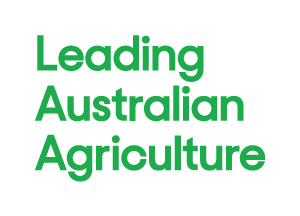Food, Fibre & Forestry Facts is published annually by the NFF as a compendium of useful and authoritative facts and figures about Australian agriculture, based on fully attributed data from independent sources.
It is designed as a fast reference to national and state-by-state facts about Australia’s farm sector, including specific data on Australia’s leading agricultural commodities, covering: Beef, Cotton, Dairy, Dried Fruits, Forestry, Grains, Rice, Sheep Meat, Sugar and Wool.
For the full Farm Facts publication: click here
Agriculture plays a vital role in Australia, contributing to our social, economic and environmental sustainability.
There are approximately 85,483 agricultural businesses in Australia that have an Estimated Value of Agricultural Operations (EVAO) of $40,000 or greater (as of June 2018). More than 99% of Australian agricultural businesses are wholly Australian owned, with Australians owning 88% of Australian’s agricultural land. Wholly Australian owned businesses also control 87% of Australia’s agricultural water entitlements.
Food imports only account for 15 per cent of Australia’s daily food supply. As of August 2019, 318,600 people were employed in agriculture, forestry and fisheries which accounted for around 2.5% of the national workforce.
The gross value of Australian agriculture in 2018-19 was $62.208 billion. This is expected to fall to $59.353 billion in 2019-20 due primarily to the drought.
In Australia, individuals spent on average $4,739 for food in 2015-16. This includes eating out and non-alcoholic beverages. This amount rose by 16 per cent over the previous six years.
The top three agricultural commodities produced nationally ranked by export value in 2018-19 were: Cattle and calves ($9.485 billion), Wool ($4.159 billion) and Wheat ($3.676 billion).
Out of the $62.2 billion worth of food and fibre Australian farmers produced in 2018-19, 79 per cent ($49.2 billion) was exported.
Agricultural business’s occupy and manage 51% of Australia’s landmass, as such, they are at the frontline in delivering environmental outcomes on behalf of the broader community.
Of the 394 million hectares of land operated by agricultural businesses in Australia, 341 million hectares (or 87%) was used for grazing which is a 9% increase when compared to 2015-16. An estimated 65,000 agricultural businesses (or 74%) of all agricultural businesses reported grazing land, a proportion virtually unchanged from the previous year.
Australian primary industries have led the nation in reducing greenhouse gas emissions – a massive 63% reduction in emissions intensity between 1996 and 2013.
A key aspect of modern agriculture is the integration of science and technology into management practises. Agricultural industries rely on knowledge derived from areas as diverse as plant and animal biology and behaviour, chemistry, statistics, land resource, genetics, environment and climate; and the integration of this knowledge with economics and modern information technologies.
Calculations by ABARES show that a $1 public investment in RD&E leads to $12 in benefits generated by farmers in the long term. The RDCs collectively invest around $600 million a year into RD&E, and have a total budget of about $800 million. In 2017-18 Australian farmers invested $338 million in research and development through industry levies.
Efficiency gains through new technologies and farm management practices, achieved on the back of research and development, have enabled Australian agriculture to stay a step ahead of our international competitors – returning average productivity growth of 2.7% -a-year over a 30-year period.

Copyright © 2024 · Created by the National Farmers' Federation